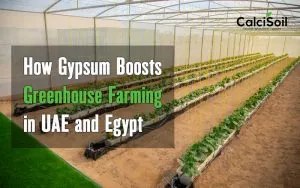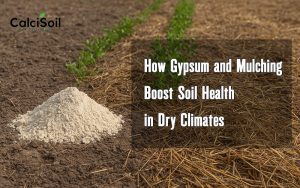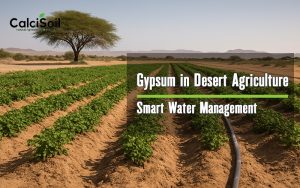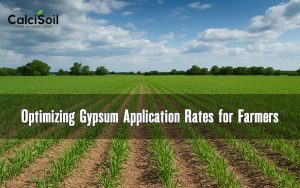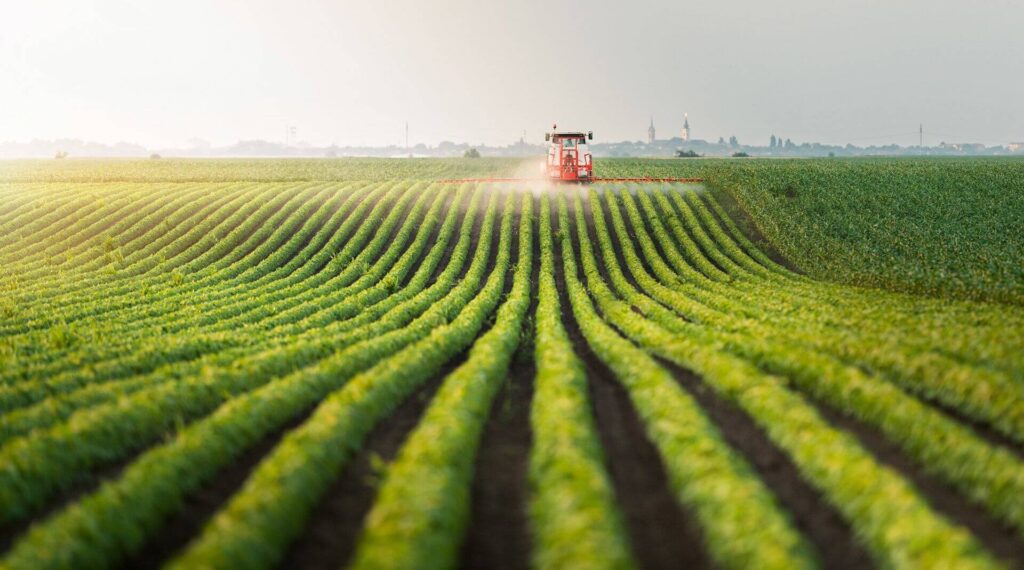
improving water use efficiency and drought tolerance in crops using gypsum
Gypsum is a naturally occurring mineral has been used as a soil amendment for centuries. It’s commonly used in agriculture to improve soil structure, reduce soil compaction, and provide essential nutrients to crops. However, one of its lesser-known benefits is its ability to improve water use efficiency and drought tolerance in crops. Water is essential for plant growth, but it’s also a limited resource. In many regions of the world, water scarcity is becoming an increasingly pressing issue. and agriculture is one of the largest consumers of water. Improving water use efficiency in crops is therefore crucial for sustainable agriculture.
Gypsum role in improving water use efficiency
Gypsum can improve water use efficiency in several ways. First, it increases water infiltration rates, allowing water to penetrate deeper into the soil. This improves the availability of water to plant roots, especially in areas with limited rainfall or in times of drought. Second, gypsum improves the hydraulic conductivity of soil, allowing water to move more easily through the soil profile. Third, gypsum enhances water storage in the soil, reducing the need for frequent irrigation and improving drought tolerance.
A study conducted by Wildman et al. (1988) found that gypsum use increased water infiltration rates up to 90% in clay soils and up to 40% in sandy soils. This is because gypsum improves soil structure by reducing soil compaction and promoting aggregation, which creates larger pore spaces that allow water to move more freely through the soil. In addition, Hall et al. (1994b) found that gypsum increased the root biomass of crops, which can also improve water use efficiency.
Reasons for the importance of improving water efficiency
Improved water use efficiency can lead to several benefits for crops. First, it can increase crop yields by reducing water stress and improving nutrient uptake. Second, it can reduce the amount of water needed for irrigation, which can lead to cost savings for farmers and reduce the environmental impact of agriculture. Third, it can improve the drought tolerance of crops, allowing them to survive periods of water scarcity.
However, it is important to note that the benefits of gypsum for water use efficiency and drought tolerance may vary depending on soil type, crop species, and environmental conditions. In some cases, excessive use of gypsum can lead to negative effects such as increased soil salinity or reduced nutrient availability. Therefore, it is important to apply gypsum according to recommended rates and in combination with other soil management practices.
Useful methods for improving water use efficiency
In addition to gypsum, researchers are also exploring other methods for improving water use efficiency and drought tolerance in crops. For example, genetic modifications or plant breeding can be used to develop crops that are more drought tolerant or use water more efficiently. Precision irrigation technologies, such as drip irrigation or soil moisture sensors, can also be used to reduce water waste and improve water use efficiency.
In conclusion, gypsum is a valuable tool for improving water use efficiency and drought tolerance in crops. By improving water infiltration rates, hydraulic conductivity, and water storage in the soil, gypsum can help crops access water more efficiently, even in times of water scarcity. However, it is important to apply gypsum appropriately and in combination with other soil management practices to maximize its benefits. Together with other water-saving technologies, gypsum can play a crucial role in achieving sustainable agriculture in the face of water scarcity.


